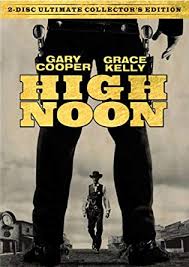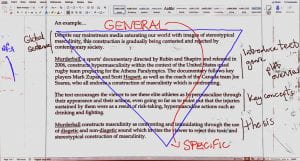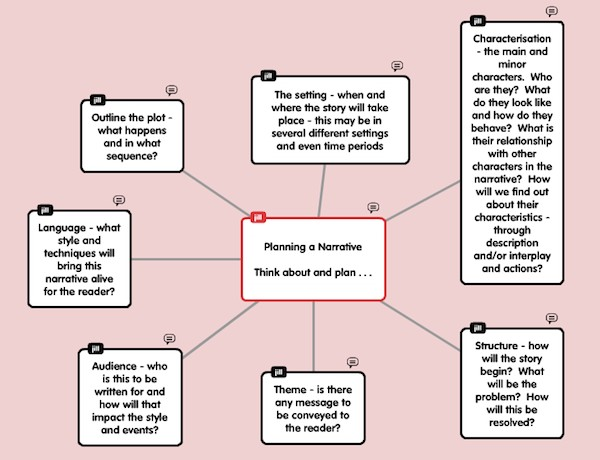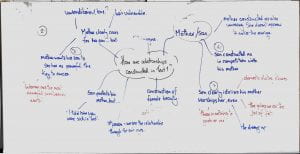Narrative
Purpose
The basic purpose of narrative is to entertain, to gain and hold a readers’ interest. However narratives can also be written to teach or inform, to change attitudes / social opinions eg soap operas and television dramas that are used to raise topical issues. Narratives sequence people/characters in time and place but differ from recounts in that through the sequencing, the stories set up one or more problems, which must eventually find a way to be resolved.
Types of narrative
There are many types of narrative. They can be imaginary, factual or a combination of both. They may include fairy stories, mysteries, science fiction, romances, horror stories, adventure stories, fables, myths and legends, historical narratives, ballads, slice of life, personal experience.
Features
- Dialogue often included – tense may change to the present or the future.
- Descriptive language to create images in the reader’s mind and enhance the story.
Structure
In a Traditional Narrative the focus of the text is on a series of actions:
Orientation: (introduction) in which the characters, setting and time of the story are established. Usually answers who? when? where? eg. Mr Wolf went out hunting in the forest one dark gloomy night.
Complication or problem: The complication usually involves the main character(s) (often mirroring the complications in real life).
Resolution: There needs to be a resolution of the complication. The complication may be resolved for better or worse/happily or unhappily. Sometimes there are a number of complications that have to be resolved. These add and sustain interest and suspense for the reader.
To help students plan for writing of narratives, model, focusing on:
- Plot: What is going to happen?
- Setting: Where will the story take place? When will the story take place?
- Characterisation: Who are the main characters? What do they look like?
- Structure: How will the story begin? What will be the problem? How is the problem going to be resolved?
- Theme: What is the theme / message the writer is attempting to communicate?
Language
- Action verbs: Action verbs provide interest to the writing. For example, instead of The old woman was in his way try The old woman barred his path. Instead of She laughed try She cackled.
- Written in the first person (I, we) or the third person (he, she, they).
- Usually past tense.
- Connectives,linking words to do with time.
- Specific nouns: Strong nouns have more specific meanings, eg. oak as opposed to tree.
- Active nouns: Make nouns actually do something, eg. It was raining could become Rain splashed down or There was a large cabinet in the lounge could become A large cabinet seemed to fill the lounge.
- Careful use of adjectives and adverbs: Writing needs judicious use of adjectives and adverbs to bring it alive, qualify the action and provide description and information for the reader.
- What does it smell like?
- What can be heard?
- What can be seen – details?
- What does it taste like?
- What does it feel like?
Imagery
- Simile: A direct comparison, using like or as or as though, eg. The sea looked as rumpled as a blue quilted dressing gown. Or The wind wrapped me up like a cloak.
- Metaphor: An indirect or hidden comparison, eg. She has a heart of stone or He is a stubborn mule or The man barked out the instructions.
- Onomatopoeia: A suggestion of sound through words, eg. crackle, splat, ooze, squish, boom, eg. The tyres whir on the road. The pitter-patter of soft rain. The mud oozed and squished through my toes.
- Personification: Giving nonliving things (inanimate) living characteristics, eg. The steel beam clenched its muscles. Clouds limped across the sky. The pebbles on the path were grey with grief.
- Rhetorical Questions: Often the author asks the audience questions, knowing of course there will be no direct answer. This is a way of involving the reader in the story at the outset, eg. Have you ever built a tree hut?
- Participles: “Jumping with joy I ran home to tell mum my good news.”
- Adverbs: “Silently the cat crept toward the bird”
- Adjectives: “Brilliant sunlight shone through the window”
- Nouns: “Thunder claps filled the air”
- Adverbial Phrases: “Along the street walked the girl as if she had not a care in the world.”
- Conversations/Dialogue: these may be used as an opener. This may be done through a series of short or one-word sentences or as one long complex sentence.
- Show, don’t tell: Students have heard the rule “show, don’t tell” but this principle is often difficult for some writers to master.
- Personal voice: It may be described as writing which is honest and convincing. The author is able to ‘put the reader there’. The writer invests something of him/her self in the writing. The writing makes an impact on the reader. It reaches out and touches the reader. A connection is made.











